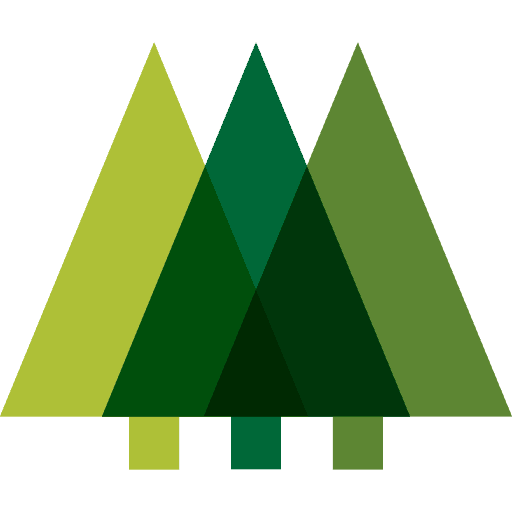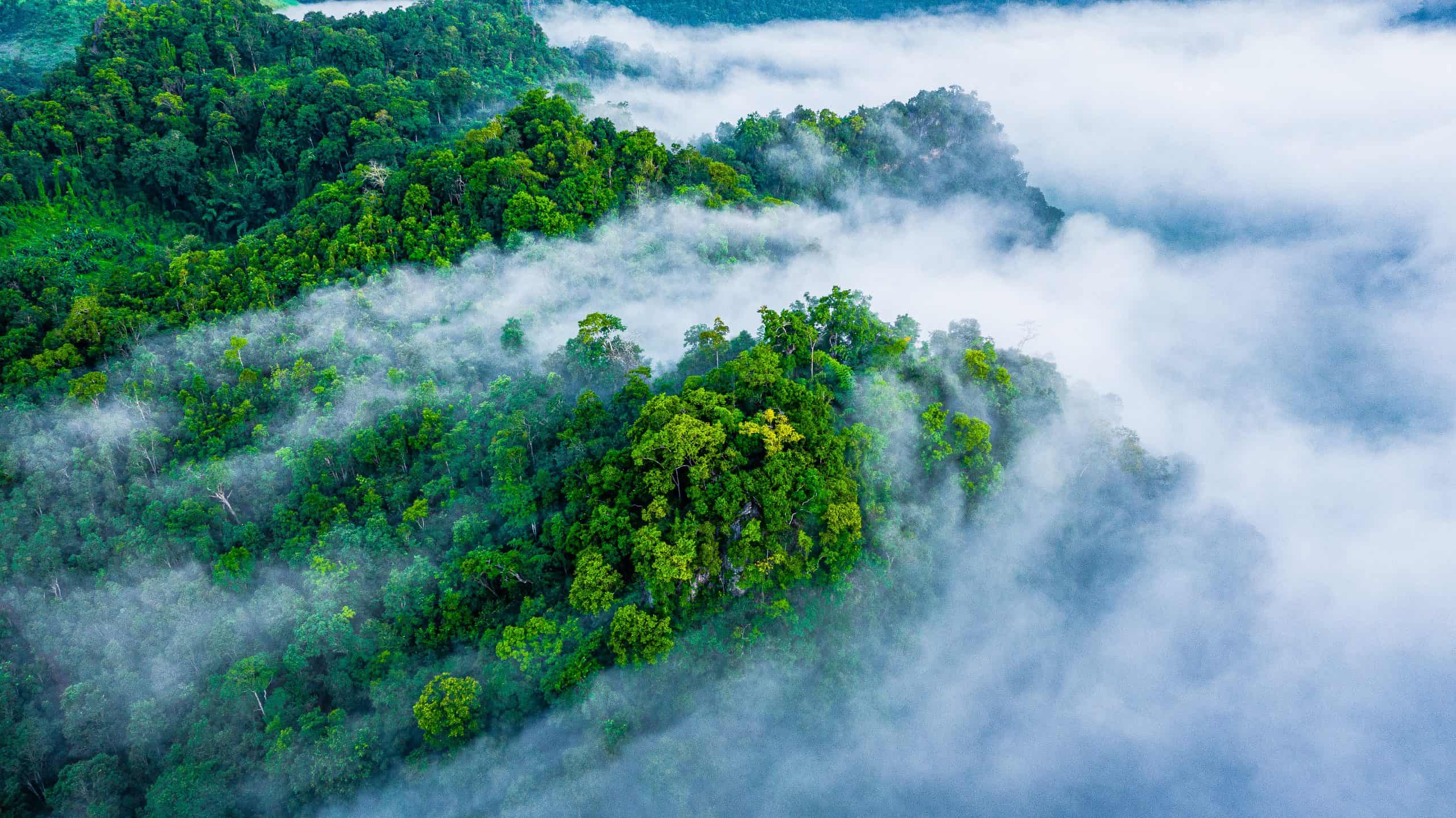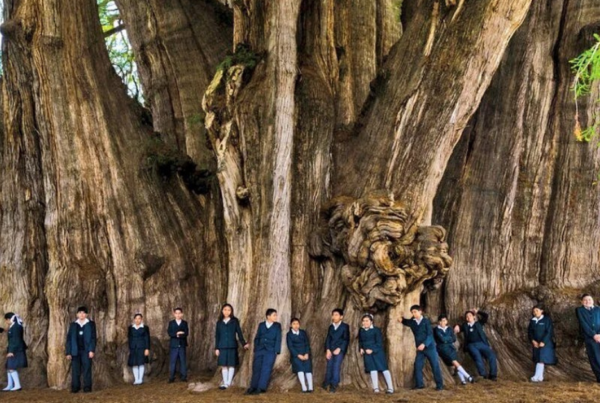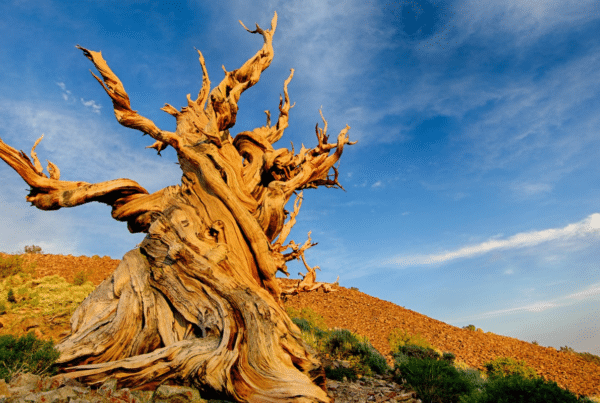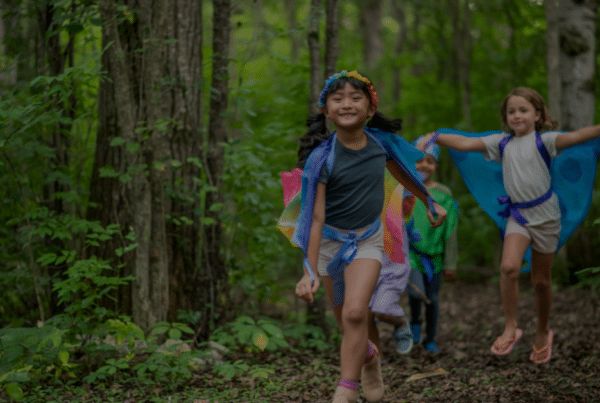Is tree planting really the best way of fighting climate change?
Let’s rephrase the question.
Would you trust a young child to deliver critical results that future generations depend on – even if the child has tons of potential?
Probably not. Because she wouldn’t even know where to begin.
This guide will take you through everything you need to know about tree planting and:
- climate change
- biodiversity and wildlife
- the risks of relying on tree planting
- people and livelihoods
But first, let’s summarize.
A young tree is exactly like that child. It has the potential to help stop climate change once it grows up, but that takes decades. And in the meantime, there’s a lot working against it.
- It’s small, which means it doesn’t hold much carbon, even combined with thousands of other small trees.
- It’s weak, which means it’s at higher risk of dying from storms, pests, or other stresses. If that happens, its future climate benefits are suddenly gone.
- It’s young, so it can’t support biodiversity, endangered species, or wildlife habitats.
- It’s new, so won’t have much cultural importance for communities. Nor will it provide them any useful resources.
- And it needs nurturing. You can’t just ‘plant it and leave it’. How many trees survive is more important than how many trees are planted.
Now, how often do you see reforestation projects talk about their impacts like that? Most often, you’ll see impressive statistics about the number of trees planted. Or, you’ll see attention-grabbing headlines like ‘One dollar, one tree’ or ‘For every t-shirt, we plant a tree’.
It’s great that these organizations are making it easy to plant a tree. But as we’ll see, planting new trees doesn’t make up for the billions of trees we’re losing.
That’s because the ones we’re losing are decades (sometimes centuries!) old.
They’re tall and fully grown.
They hold massive amounts of carbon right now – not twenty years in the future.
They are strong enough to withstand natural disasters and other stresses. And they have developed enough of a network to support each other if something does happen.
They provide critical resources like food and medicine to local communities.
And because they are part of a real ecosystem – not just a grid of little trees – they are home to irreplaceable biodiversity and endangered species. Which, in turn, also makes the trees stronger and more resilient.
If we lose them, we lose all of that today.
That’s why we work to protect existing forests and ecosystems.
We’ve broken this up into sections: climate, biodiversity, resilience, and people. Each is an integral piece of the equation, and the work we do addresses all these pieces collectively.
Let’s jump in.
Can planting trees solve climate change?
Tree planting has been getting a lot of attention recently, and as we said above, you’ve probably seen lots of catchy slogans. Any reforestation project will emphasize how tree planting can help to reduce carbon dioxide. And that’s fair enough – it does.
But as for how effective it is, the numbers tell a different story.
It takes 10 years for trees to really store any carbon
According to the UK’s Royal Society, it takes planted trees at least 10 years to reach their maximum carbon sequestration rate – the point at which they can absorb the most tonnes of carbon from the atmosphere every year. They’ll keep doing that until the trees mature, which, depending on the species, will happen after around 20 to 100 years[1].
Reforesting up to 800 million hectares worldwide could remove up to 300 billion tonnes over 25 years. Or, according to another similar report, reforesting 900 million hectares worldwide could remove around 200 billion tonnes – if the planted areas mature to a similar state as protected ecosystems[2].
Both of those are in the same ballpark. And yes, those are big numbers. But there are a few things to note.
First, this requires newly planted trees to grow into a mature forest. That takes time – decades at least. And it will only happen if they are cared for immediately after planting, and then allowed to mature naturally.
That often doesn’t happen. Many tree planting projects don’t plan for any sort of care after planting – so many trees may not survive[3]. Some countries are planting trees with the intention of harvesting and replanting them later.
This means that many planted forests will never reach maturity. And if they don’t, tree planting isn’t delivering the benefits you think it is.
Second, a new tree will take at least ten years, and probably more, to really start making a difference to the climate. Which is understandable – young trees are pretty small.
Third, ‘maximum sequestration rate’ doesn’t tell you anything about how much carbon the tree is absorbing every year – only that it’s sucking it up as fast as possible. And a small tree can only absorb so much. An old tree has already matured, so it won’t absorb carbon as fast as a young one – although, of course, it does absorb some.
Fourth, it also has nothing to do with whether the tree has stored as much carbon as it possibly can. That old tree holds a massive amount of carbon in its trunk, branches, leaves, and roots. It’s built that store up over decades, by absorbing a little more carbon and growing a little more every year. Then there are the soils: in some forests, there’s more carbon in the soils than in the trees[4]!
Large trees, pardon the pun, don’t grow on trees. They need decades, sometimes even centuries, before they reach maturity. And they store half of all the carbon in the rainforest[5]. If we lose them, they take hundreds of years to come back, if they ever do.
Which means that it’s even more important to protect what we have. As they say, prevention is better than the cure.
Don’t take our word for it. Here’s William Moomaw, lead author for five reports of the Intergovernmental Panel on Climate Change (IPCC):
[Tree planting is a great thing] to do, but [it] will not make much of a difference in the next two or three decades because little trees just don’t store much carbon. Letting existing natural forests grow is essential to any climate goal we have[6].
How much carbon do planted trees store?
Then there’s the question of how effective planted forests are at storing carbon. There are a few things we could compare:
- Planting large amounts of trees, like in a plantation
- Planting a mix of native species
- Forest restoration, also called natural regeneration.
Tree plantations
We already know that plantations aren’t ideal. They’re usually just one species, which is terrible for biodiversity. And often, they’ll be harvested in the future – that’s why restored natural forests (option c) are 40% more effective at storing carbon[7]. But even those restored forests will take 70 years to reach the carbon stock level of the original forest – assuming they are protected from disturbances[8].
Even if plantations are not harvested, natural forests are still far more reliable at storing carbon[9]. That’s because the plantations are more severely affected by drought, and so they capture almost a third less carbon than natural forests in the dry season. And since climate change is expected to worsen droughts, replanted forests will be even worse off.
So, any tree planting projects that are just planting one type of tree should be out of the question.
Native species or natural regeneration
The good news is, the tree planting programs that the average person or business supports are probably trying to do things right: planting a mix of native species, involving locals, natural regeneration. In other words, a mix of options b) and c). (Really, without checking into the details of each project, we can’t be sure, but let’s give them the benefit of the doubt.)
For degraded lands, this is actually the only option. For example, adding shade trees to coffee or cocoa farms is one of the best ways of improving biodiversity and storing more carbon. The coffee and cocoa farmers gain a lot of environmental and economic benefits, improving their quality of life. And since it’s unlikely a farm will be ever converted back to a forest, we might as well improve its tree cover as much as possible.
It’s probably the best that you could hope for.
The problem is, it’s still not good enough.
Forests restored through natural regeneration still take years to regenerate. And like we said above, saplings store much less carbon along the way than existing trees do today[10].
Then, when they reach maturity, they still hold less carbon. Some estimates have suggested that even after 85 years, replanted trees stored only around 83% of the carbon as an undisturbed forest, and their roots stored only about 50-75%[11]. Even though that’s fairly close, reaching 100% could take a lot longer.
What’s more, although that particular study found that soil carbon recovered quite quickly, others have found that it can take at least 50 years before it gets close to original levels[12].
What does this mean? That even if you’re doing the best tree planting you can…
…focusing on natural regeneration as much as possible…
… planted forests still can’t hold a candle to the carbon storage of natural forests – even after decades.
In other words, forest protection is still our best option.
So ignore all the catchy slogans.
Better to keep a forest safe rather than try to bring back a pale imitation of it later.
Half the benefit… and twice the loss
One last example to leave you with. Scientists have estimated that regrowing tropical forests can store around 6 tonnes of carbon per hectare per year in the first 20 years of growth. After that, they slow down, and the final average is ~3 tonnes per hectare per year over 80 years[13]. That adds up to 240 tonnes per hectare.
Meanwhile, old-growth tropical forests hold up to 418 tonnes of carbon per hectare – today[14].
Now imagine if we cut that down. We’d release 418 tonnes of carbon emissions into the atmosphere right now.
If we replanted, we’d get 6 tonnes back this year.
And, after 80 years, if the forest is still standing, we’d finally get about half of what we lost back.
So can planting trees really save the climate?
We’re not so sure.
Can planting trees support biodiversity and wildlife?
Have you ever heard the word ‘depauperate’?
Derived from Latin, it’s related to the word ‘impoverished’, which you probably have heard. But not a poor person: a poor ecosystem. One that’s lacking in ‘numbers or variety of species’[15].
That’s what many scientists call secondary (young) tropical forests – like the ones created by reforestation efforts – because they have so much less biodiversity than primary (old-growth) ecosystems[16].
Ouch.
Why is that?
A few reasons: the young forests have a much more open canopy and not much vegetation on the forest floor. Their ecosystems are different, with many more generic species, rather than the unique and rare ones that develop in old-growth forests over decades or centuries.
And although the number of species might increase quickly in a young, quickly growing forest, that doesn’t mean they’re the same species that were originally there.
For wildlife, that’s a big problem. Wildlife is part of biodiversity, but it’s also supported by biodiversity. And without biodiversity, a forest can’t provide the proper habitat for wildlife.
Many birds and animals are adapted to their original ecosystems, and need very specific features (often called ‘critical habitat’). They might live in those unique trees. Or they might eat fruits or leaves that are only found in some of the special species in old-growth forests, or live in physical structures that only appear after many decades, like large fallen trees. Often, they need large areas of untouched, remote forest – which by definition doesn’t really exist when humans are walking around, planting trees[17].
And that means that secondary forests can’t support the same endangered animals, birds, or other wildlife, as a primary forest[18].
That’s why, in so many cases, wildlife won’t move into restored forests. One study found that animals might only come back after 150 years[19]!
That’s way too long.
Endangered animals and birds need our help now. They can’t afford to wait 50 to 150 (or 4,000!) years for ecosystems to hopefully recover. They’ll go extinct first.
A few interesting statistics
- Singapore has almost ten times more restored forest than original forest. But it only supports 60% as many species as the original forest.
- An international team of scientists found that primary, natural forests contain more biodiversity and carbon than restored forests of any stage[20].
- Some of the new, young forests eventually recovered 80% of what the original forest had – but only when they were still near large areas of the original forest!
- The number of tree species was back to normal after 50 years – but there were still very few of the original species.
- Meanwhile, plants would need over 100 years to reach original levels.
- Animal species would only come back after 150 years[21].
- A study from Brazil found that it could take between one and four thousand years for a disturbed forest to gain back the same levels of endemic species – species that only exist in that area – as a mature forest[22].
- Plantations, of course, have the same problem. They have as much as 33% less diversity and richness than original forests[23].
- Even when every effort has been made to restore the forest and not just plant trees, there isn’t nearly as much biodiversity as the original forest[24,25].
- Recovering ecosystems have around 50% less living things and 30% less species diversity as a natural forest[26]. They also have 35% less carbon cycling – not great for fighting climate change!
What about planting native species, or natural regeneration?
We’ve covered above why natural regeneration is the best of all the options.
But even then, a forest is made up of a lot more than its trees.
There are some that we can’t plant – because we don’t have seeds, because they only start growing after a forest is several decades old, or because we simply don’t know about them.
There are millions of small plants, like vines and bushes and ferns, that grow on the forest floor and integrate with the other plants and animals around them over decades.
And so on.
Many of those are exactly the ones that never grow back.
And that’s why planting trees can never replace original forests[27,28].
But there’s more…
Benefits for people
We’ll keep this short – it’s much less complicated than everything above.
Forest communities
Many indigenous peoples and forest communities are deeply connected to their forests. Their cultural identities are often closely linked to intact forests and local plant and animal species. They also often rely heavily on resources for basic needs.
When we lose these old forests, forest dwellers lose their livelihoods and cultures. If they can’t rely on forests, they lose a source of resilience. Traditional ways of life also become impossible. This drives people off their lands, and results in a loss of cultural identity.
By now, you can probably guess where we’re going with this. Young forests made up of newly planted trees don’t have the size, diversity, or density to provide everything an old forest can, like tree bark, timber, fruits, berries, medicinal plants, or species that are important for food and cultural reasons. Only the old forests can do that.
Additional benefits of trees
Trees also provide a lot of other benefits. Some of these are probably more relevant to an urban forest, but they’re still worth mentioning.
They can improve air quality, create shade, decrease soil erosion and even improve water quality. The only problem is… they need to be big to do any of this.
Think about a shade tree that you might want to sit under. It’s probably large, and leafy, and has a nice thick trunk that you can lean back on. Now how much of that are you going to get from a tiny little sapling?
Probably not much.
Resilience and resistance
Okay, this is the last one. You know how all those self-help articles are always going on about how we need to learn resilience so we can be better at handling the unexpected twists and turns that life throws at us?
The same is true here. Trees and forests suffer all sorts of stresses in their lifetimes (which, unlike ours, can be multiple centuries long). There are natural disasters like fires, droughts, or floods, plus other disturbances like pests, diseases, or animals eating branches or leaves.
Resilience is the ability to recover from a major disturbance (think forest fire), and resistance is the ability to stay healthy with minor, long-term disturbances (think animals eating leaves).
Healthy, old forests can do both, thanks to their strength. Old trees have huge trunks, their roots extend deep into the ground, and they can’t be pushed around very easily.
On the other hand, small, young trees – like recently planted ones – aren’t very strong. They’re light, thin, and short, and they can be moved easily. (Else, you wouldn’t be able to plant them in the first place!)
Unfortunately, this also means they’re much weaker than old ones. Young trees have fewer leaves and branches, they are thinner, and their root systems are much shallower.
What does that mean?
First, that they have a higher risk of dying, whether from pests or diseases or natural disasters.
Young trees are less resistant to stress – they simply haven’t developed the ability to cope. For example, in the Amazon, tropical forests with tall, older trees are three times less sensitive to variations in precipitation (generally rainfall) than forests with shorter, younger trees.
This is because the older trees’ roots go deeper, which lets them access more soil moisture. So they can keep growing during droughts[29]– which, as we said above, will probably become worse and more frequent with climate change.
Young trees are also often easier to cut down than old ones[30]. It’s only natural: think how much stronger a fully grown adult is compared to a baby or child.
That’s why in the Amazon, young forests only last 5-8 years on average. And even in Costa Rica, which has doubled its forest cover in the last years, half the forests disappear within 20 years after being planted – along with the carbon they were supposed to store. (‘Trees, we hardly knew ye!’)[31]
If that happens, the carbon you thought you were saving wasn’t really saved. If you’ve bought carbon credits, what you bought could be worth nothing.
And if an existing forest got chopped down in the meantime, it’s a double whammy. Not only did we lose the planted tree’s potential carbon storage, but we also lost all the carbon that the existing tree holds.
Then there’s biodiversity.
Why forests need biodiversity to be resilient
In the previous section, we covered how old, natural forests are much better for biodiversity than young forests.
That goes both ways. Old, natural forests are also more resilient because of the massive numbers of different species that live in them. Each of these species might do something different: one animal spreads leaves and seeds, a species of bird controls insects and pests, one plant provides shade to another, which in turn provides some needed substance to the first one, and so forth.
In these forests, there’s enough variety in each species to maintain a healthy population. If one individual tree gets sick, another healthy tree can help it out. And, worst case, there are enough species that if one disappears, another one can take its place.
That’s why more biodiversity means more resilience[32] – and especially more resilience to climate change, which will stress everything[33].
So the lower biodiversity in young, newly planted forests means lower resilience overall[34].
You also saw earlier that the original trees and plants often don’t grow back when a forest is replanted. That also makes young forests extremely vulnerable to degradation[35].
To go back to the child metaphor from the beginning, the young ones haven’t developed enough strength, stability, or resilience to survive adverse events yet.
That’s why we work to protect tropical, old-growth, natural, healthy forests.
To finish up…
… here’s a nice little infographic!
We’re not trying to say that planting trees isn’t important. It is. It’s the best option for degraded lands, such as for restoring some natural ecosystems to farms.
But it’s a long-term plan, and we’re trying to fight climate change today. To save animals and ecosystems. And to support local and indigenous people and communities.
Planting trees just doesn’t cut it for any of those.
We have to put all our efforts into saving existing, natural tropical forests. Forests that safely store away huge amounts of carbon. Forests that provide habitat for wildlife and protect animals, birds, biodiversity, and ecosystems. Forests that support people, livelihoods, and cultures.
Forests that are never coming back if they get cut down.
That’s why we do what we do.
If you want to read more about how we do it, you can do so here.
And in the meantime, next time you see one of those catchy-sounding tree-planting announcements…
… think twice about what it really means.
If you found this interesting, sign up for our newsletter to stay on top of our work! No spam, ever.
P.S. Want to see the World’s Oldest Tree? Check out our blog about it.
References
[1] https://royalsociety.org/-/media/policy/projects/greenhouse-gas-removal/royal-society-greenhouse-gas-removal-report-2018.pdf
[2] https://science.sciencemag.org/content/365/6448/76
[3] http://apps.worldagroforestry.org/downloads/Publications/PDFS/WP20001.pdf
[4] https://e360.yale.edu/features/why-keeping-mature-forests-intact-is-key-to-the-climate-fight
[5] https://news.mongabay.com/2013/08/old-growth-trees-store-half-rainforest-carbon/
[6] https://e360.yale.edu/features/why-keeping-mature-forests-intact-is-key-to-the-climate-fight
[7] https://news.mongabay.com/2019/04/natural-forests-best-bet-for-fighting-climate-change-analysis-finds/
[8] https://news.mongabay.com/2019/04/natural-forests-best-bet-for-fighting-climate-change-analysis-finds/
[9] https://phys.org/news/2020-01-biodiverse-forests-carbon-periods.html
[10] https://e360.yale.edu/features/why-keeping-mature-forests-intact-is-key-to-the-climate-fight
[11] https://royalsocietypublishing.org/doi/full/10.1098/rspb.2013.2236
[12] https://www.sciencedirect.com/science/article/abs/pii/S0048969718333229
[13] https://onlinelibrary.wiley.com/doi/epdf/10.1046/j.1526-100x.2000.80054.x
[14] https://news.mongabay.com/2013/08/old-growth-trees-store-half-rainforest-carbon/
[15] https://www.lexico.com/definition/depauperate
[16] https://onlinelibrary.wiley.com/doi/full/10.1111/j.1744-7429.2006.00141.x
[17] https://onlinelibrary.wiley.com/doi/full/10.1111/j.1744-7429.2006.00141.x
[18] https://onlinelibrary.wiley.com/doi/full/10.1111/j.1744-7429.2006.00228.x
[19] https://royalsocietypublishing.org/doi/full/10.1098/rspb.2013.2236
[20] https://www.oneearth.org/protection-of-primary-forests-is-priority-but-reforestation-is-also-crucial/
[21] https://royalsocietypublishing.org/doi/full/10.1098/rspb.2013.2236
[22] https://www.sciencedirect.com/science/article/abs/pii/S0006320708001456?via%3Dihub
[23] https://link.springer.com/article/10.1007/s10531-010-9936-4
[24] https://link.springer.com/article/10.1007/s10531-010-9936-4
[25] https://news.mongabay.com/2011/09/old-growth-forests-are-irreplaceable-for-sustaining-biodiversity/
[26] https://pubmed.ncbi.nlm.nih.gov/28106039/
[27] https://pubmed.ncbi.nlm.nih.gov/28106039/
[28] https://www.nature.com/articles/nature10425
[29] https://www.nature.com/articles/s41561-018-0133-5
[30] https://www.sciencemag.org/news/2020/09/plant-trees-or-let-forests-regrow-new-studies-probe-two-ways-fight-climate-change
[31] https://www.sciencemag.org/news/2020/09/plant-trees-or-let-forests-regrow-new-studies-probe-two-ways-fight-climate-change
[32] https://besjournals.onlinelibrary.wiley.com/doi/full/10.1111/1365-2745.13320
[33] https://www.nature.com/articles/nclimate3109
[34] http://www.fao.org/3/i2560e/i2560e05.pdf
[35] https://www.jstor.org/stable/4092167?seq=1

